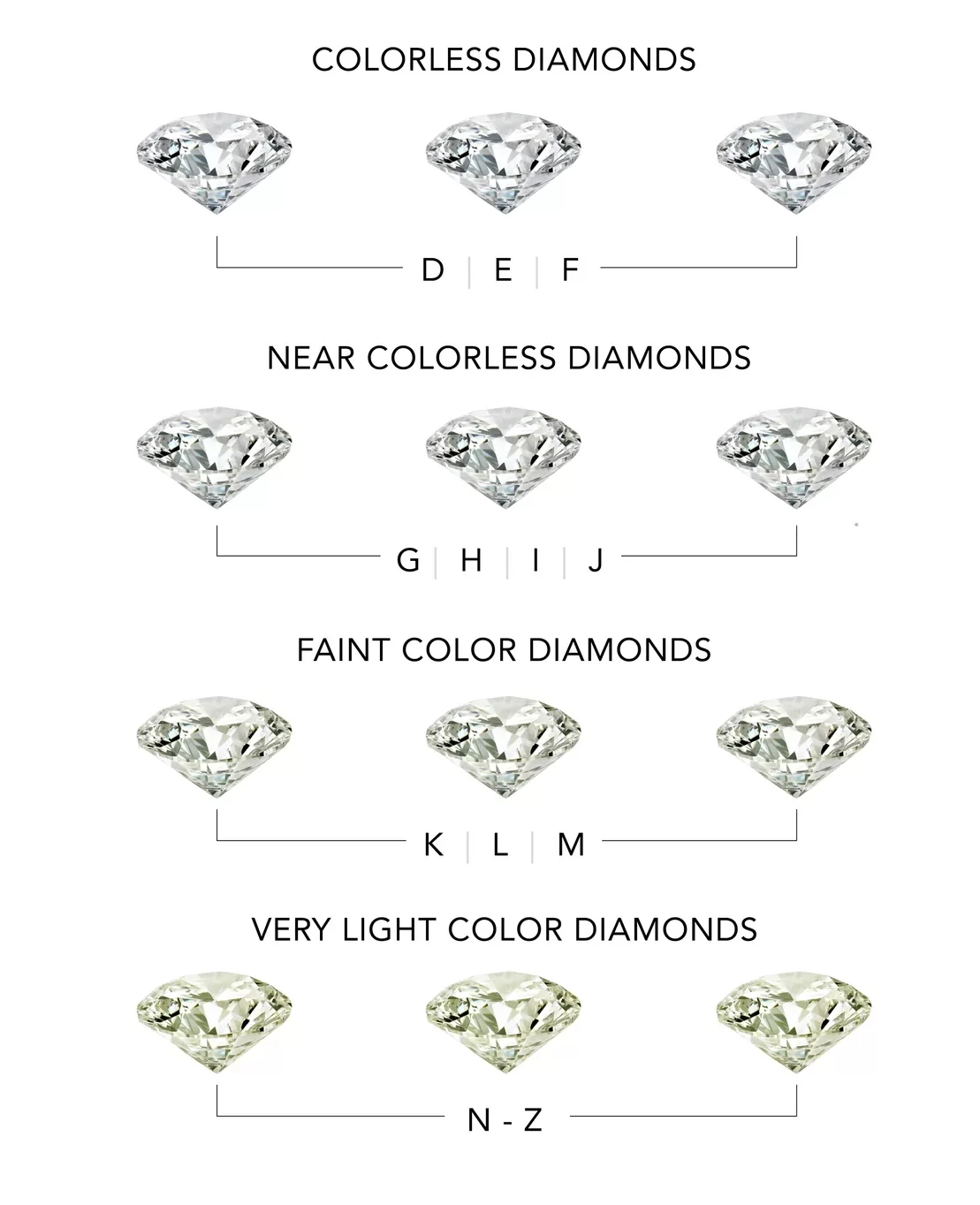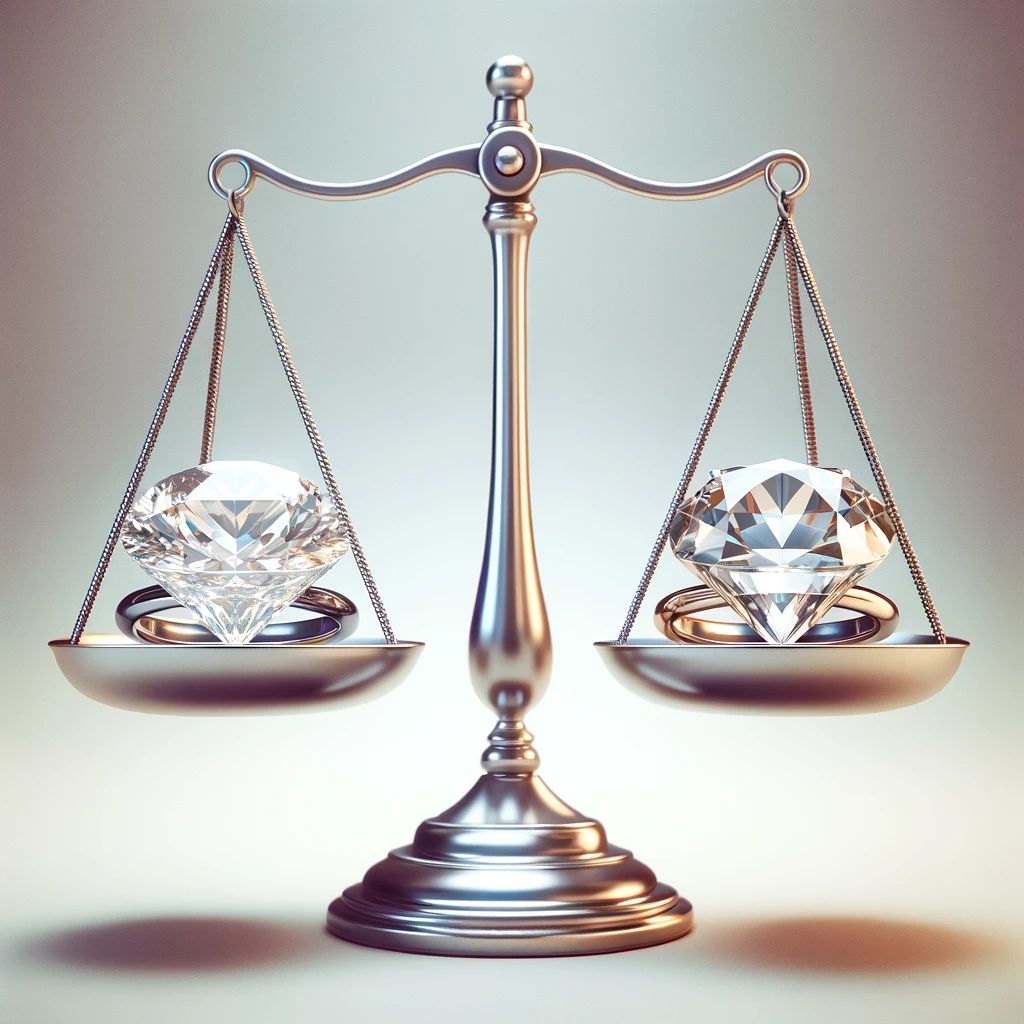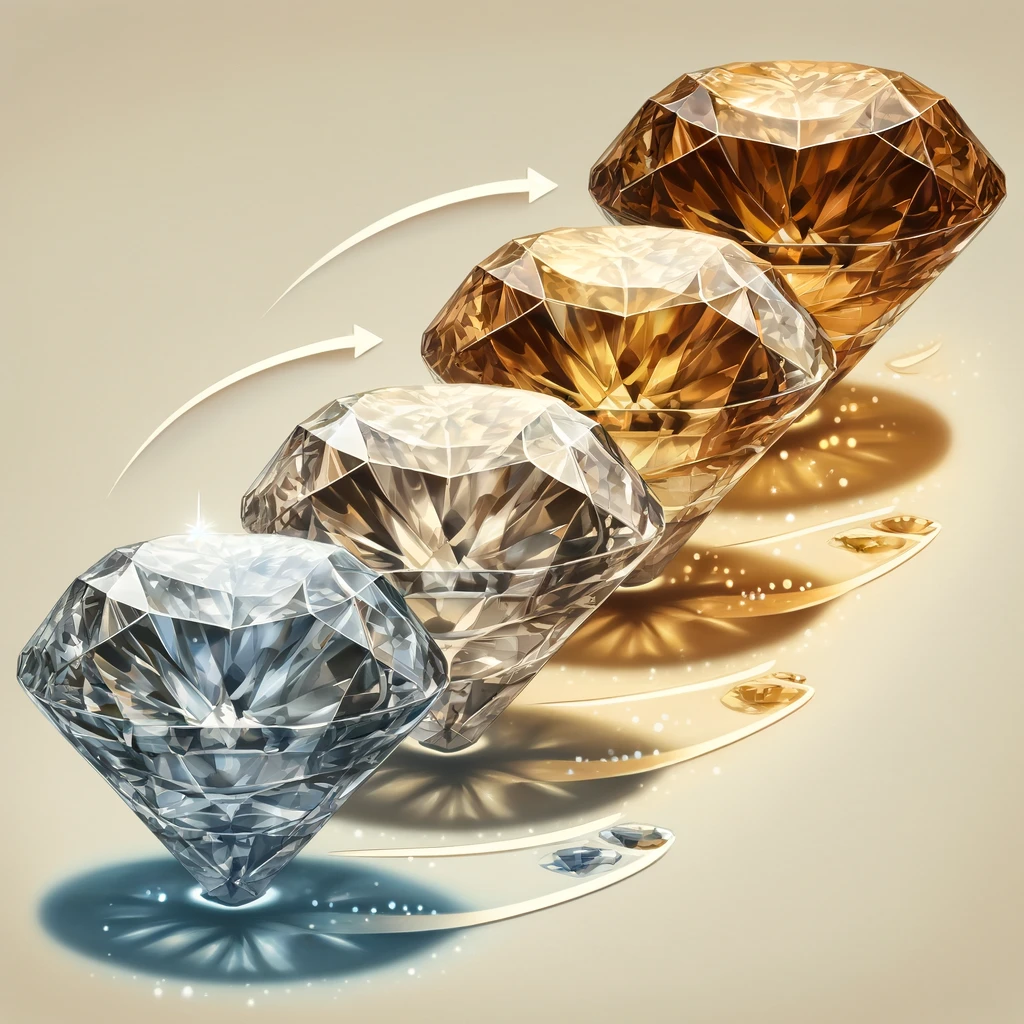When it comes to selecting the perfect diamond, whether it’s for a diamond earring or a wedding ring, one of the most crucial factors to consider is diamond color. Diamond color significantly impacts a diamond’s appearance and value.
In this blog post, we’ll explore what diamond color is, the diamond color chart, color grades for diamonds, the best color for a diamond, and the importance of color versus clarity.
Arming yourself with proper diamond education can go a long way in helping you choose the perfect diamond within your budget.
What is Diamond Color?
Diamond color refers to the presence or absence of color in a diamond. The less color a diamond has, the higher its value.
Natural diamonds come in a range of colors, from completely colorless to various shades of yellow and brown.
There are also fancy colored diamonds, which come in a variety of hues, including blue, green, pink, and even red. Fancy colored diamonds are rare and highly valued.
Diamond Color Chart
The Gemological Institute of America (GIA) developed a diamond color scale that is widely used and accepted in the diamond industry. The GIA color scale ranges from D (colorless) to Z (light yellow or brown). Here’s a breakdown of the GIA color scale:

- D-F: Colorless diamonds. These are the highest quality diamonds with no visible color. This diamond color grade gives the “icy” look.
- G-J: Near colorless diamonds. Slight traces of color can be detected, but they still appear mostly colorless to the untrained eye.
- K-M: Faint color diamonds. These diamonds have a noticeable yellow or brown tint.
- N-R: Very light colored diamonds. These diamonds have a more visible yellow or brown tint.
- S-Z: Light color diamonds. These diamonds have an obvious yellow or brown tint.
What’s the Best Color of a Diamond?
The best color grade for a diamond is D. D color diamond is the highest quality, appearing completely colorless. However, don’t be mistaken E color and F color diamonds also appear colorless to the naked eye.
Depending on your budget and preference, the “best” color can vary. While diamonds with color grades D-F are highly sought after for their pure, near-colorless appearance, diamonds in the G-J range offer a great balance between value and appearance.
From the K grade onwards, the yellow tint becomes noticeable to the naked eye.
Fancy colored diamonds, such as blue, green, and pink, are ideal for those seeking a unique and vibrant stone.
For wedding rings, many people prefer near-colorless diamonds (G-J) because they appear bright and beautiful while being more affordable than completely colorless diamonds.
Is Color or Clarity More Important?

For most people, color tends to be more noticeable than clarity, especially to the untrained eye.
When choosing a diamond, both color and clarity are important, but the significance of each can vary based on personal preference and the specific diamond.
For most people, diamond color tends to be more noticeable than clarity, especially to the untrained eye. However, clarity becomes crucial when it affects the diamond’s brilliance and overall appearance.
Quick Notes
Diamond color is a fundamental aspect of a diamond’s beauty and value. Whether you’re looking for a colorless diamond, a near colorless diamond, or a fancy colored diamond, understanding the GIA color scale and the impact of color on a diamond’s appearance will guide you in making an informed decision.
- Diamond Color: Refers to the presence or absence of color in a diamond, impacting its value. Less color increases value.
- GIA Color Chart: Ranges from D (colorless) to Z (light yellow/brown). D-F are colorless, G-J near colorless, K-M faint color, N-R very light color, S-Z light color.
- Best Color D: is the highest quality. E and F are also colorless to the naked eye. G-J offers good value and appearance; fancy colors are unique options.
- Color vs. Clarity: Color is more noticeable than clarity to most people. Both are important, but clarity matters when it affects brilliance.
- Choosing Color: Near-colorless diamonds (G-J) are popular for wedding rings due to their brightness and affordability compared to colorless diamonds.
Note The diamond cut optimally reflects and refracts light, enhancing brilliance and masking any slight color tints. Meaning depending on your diamond shape and cut the same color grade will appear different. Click here to learn more about clarity or click here to learn more about cuts
